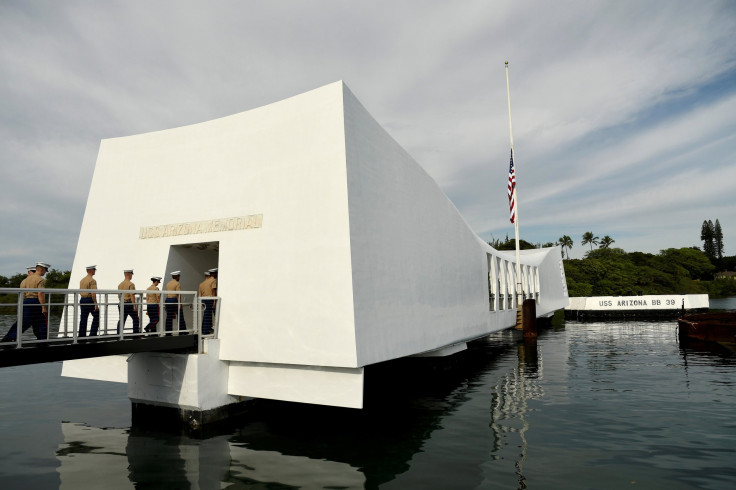Pearl Harbor Facts: How Japan Attacked Hawaii And Why Japanese Prime Minister Abe Won't Apologize For World War II Bombing

In the light of Japanese Prime Minister Shinzo Abe’s upcoming visit to Pearl Harbor with President Barack Obama Tuesday, here are some facts about the deadly attack that prompted the U.S. to join World War II on Dec. 7, 1941. The attack lasted for less than two hours, from 7:55 a.m. until 9:45 a.m., on Dec. 7, 2015. A total of 353 Japanese planes in two separate waves of offensives wounded 1,000 more American servicemen and destroyed roughly 20 ships and more than 300 airplanes. Almost half of those who lost their lives that day did so onboard the naval battleship the USS Arizona, which had been hit by Japanese bomber planes on four separate occasions.
Abe said Monday he was traveling to the USS Arizona Memorial site at Pearl Harbor, Hawaii, to “show reconciliation” between the two nations 70 years after the surprise Japanese aerial assault that resulted in the deaths of 2,335 U.S. servicemen and 68 civilians, the New York Times reported Saturday. Abe labeled the Tuesday visit, which will come in the midst of a summit meeting with President Barack Obama, as a potentially “historic one” where he hopes to send the message that Japan would never again perform such a wartime atrocity.
"The alliance between Japan and the United States is one with hope in dealing with various problems in the world," Abe said while addressing a group of Japanese business lobbyist, Reuters reported Monday.
The White House said this week's meeting between the two world leaders would show "the power of reconciliation that has turned former adversaries into the closest of allies, united by common interests and shared values."
The World War II conflict between the U.S. and Japan ended four years later when Washingon dropped an atomic bomb on the vital Japanese port cities of Hiroshima and Nagasaki, which caused the death of roughly 150,000 Japanese civilians in Hiroshima and 75,000 in Nagasaki, according to a University of California-Los Angeles study from Oct. 10, 2007.
Abe will not apologize for the Japanese attack during his visit, according to a Japanese government spokesman. Similarly, Obama chose not to apologize when he visited the drop site in Hiroshima on May 27, 2016, alongside Abe.
Since 1982, the U.S. Navy has allowed crewmembers who survived the attack to be buried at the USS Arizona to rest among their fallen servicemen, according to the Huffington Post on Dec. 7, 2016. There have been 30 Arizona crewmen who have had their cremated ashes placed among the underwater wreckage that makes up the memorial site. To do so, the incinerated remains are put into an urn, which is then brought down to the Arizona by scubadivers who place it under one of the former navy ship’s gun turrets. There were only 18 service members still alive out of the 355 who survived the attack as of November 2011.
© Copyright IBTimes 2024. All rights reserved.






















